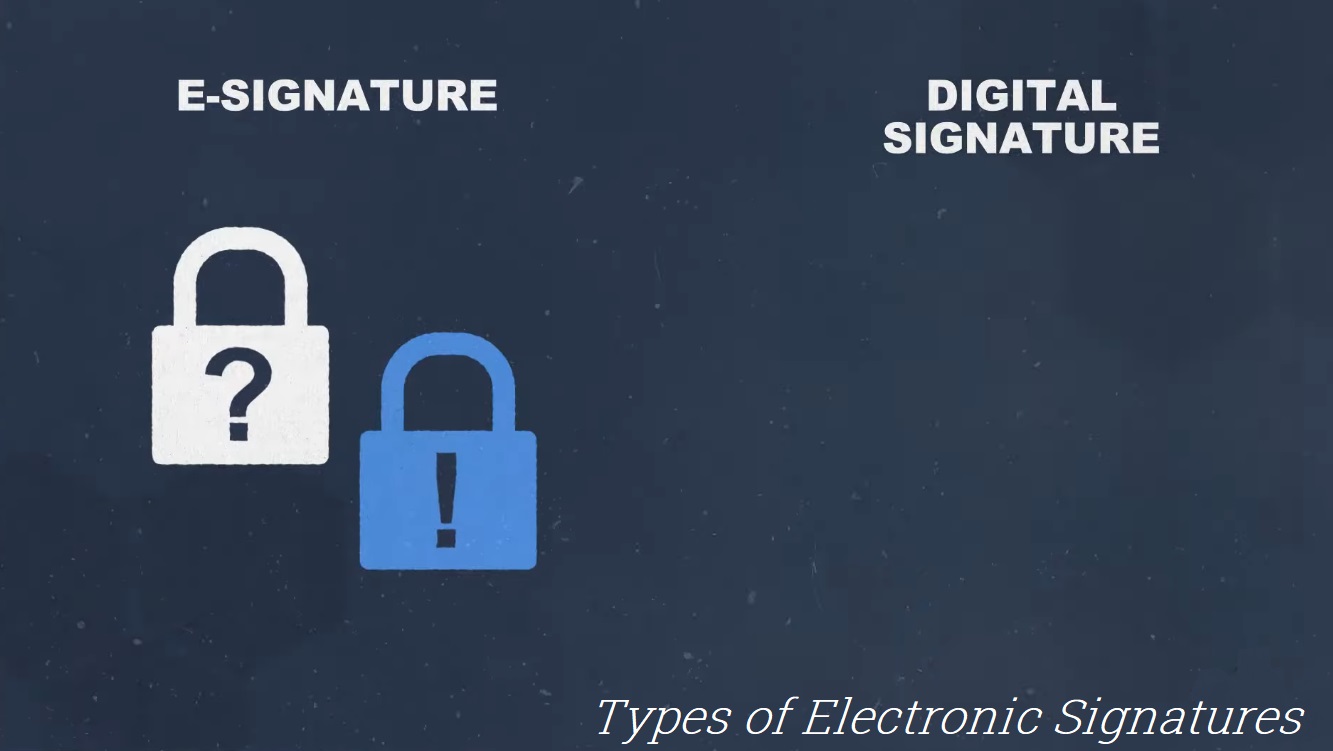Introduction
Electronic signatures have become a vital part of digital transactions, providing a convenient and secure way to sign documents electronically. Understanding the different types of electronic signatures and their applications can help businesses and individuals choose the right solution for their needs. This article explores various types of electronic signatures, their features, and their use cases.

1. Simple Electronic Signature
Description
A simple electronic signature is any electronic data that signifies a person’s intent to sign a document. It can be as basic as a typed name, a scanned image of a handwritten signature, or clicking an “I Agree” button.
Features
- Ease of Use: Simple to implement and use across various platforms.
- Versatility: Suitable for a wide range of documents and transactions.
- Minimal Security: Generally offers minimal security features and verification methods.
Use Cases
- Informal Agreements: Used for non-binding agreements and internal communications.
- Terms and Conditions: Accepting terms and conditions on websites or applications.
- Acknowledgments: Simple acknowledgments and approvals within an organization.
2. Advanced Electronic Signature (AES)
Description
An Advanced Electronic Signature (AES) provides a higher level of security and verification compared to a simple electronic signature. AES is uniquely linked to the signer and capable of identifying them. It ensures the integrity of the signed document.
Features
- Unique Identification: Uniquely identifies the signer, ensuring authenticity.
- Document Integrity: Ensures that any changes to the document after signing invalidate the signature.
- Higher Security: Uses encryption and other security measures to protect the signature.
Use Cases
- Legal Agreements: Signing contracts and legal documents requiring higher security.
- Financial Transactions: Approving high-value financial transactions.
- Sensitive Communications: Ensuring the security and integrity of sensitive communications and documents.
3. Qualified Electronic Signature (QES)
Description
A Qualified Electronic Signature (QES) is a type of advanced electronic signature that is created using a qualified electronic signature creation device and is based on a qualified certificate issued by a trusted Certificate Authority (CA). QES has the same legal standing as a handwritten signature under the EU’s eIDAS regulation.
Features
- Legal Equivalence: Legally equivalent to a handwritten signature in the EU.
- Highest Security: Provides the highest level of security and verification.
- Qualified Certificate: Requires a qualified certificate issued by a trusted CA.
Use Cases
- Cross-Border Transactions: Used for cross-border transactions within the EU.
- Regulated Industries: Suitable for highly regulated industries, such as finance and healthcare.
- Government Documents: Signing official government documents and records.
4. Digital Signature
Description
A digital signature is a type of electronic signature that uses cryptographic technology to secure and authenticate the signature. Digital signatures are created using a digital certificate issued by a trusted Certificate Authority (CA) and public key infrastructure (PKI).
Features
- Cryptographic Security: Uses encryption to secure the signature and document.
- Verification: Provides a method to verify the signer’s identity and the document’s integrity.
- Tamper-Proof: Ensures that any alterations to the document after signing invalidate the signature.
Use Cases
- High-Value Transactions: Securing high-value financial transactions.
- Legal and Regulatory Documents: Signing documents that require high levels of security and compliance.
- Healthcare Records: Securing and authenticating sensitive healthcare records and patient information.
5. Biometric Signature
Description
A biometric signature uses biometric data, such as fingerprints, facial recognition, or iris scans, to verify the signer’s identity and create the electronic signature.
Features
- Unique Identification: Biometric signatures provide a highly unique identifier for the signer, as biometric data is difficult to replicate or forge.
- Enhanced Security: Biometric signatures offer a higher level of security compared to traditional methods, as they rely on physical characteristics unique to the individual.
- Non-repudiation: Biometric signatures provide strong evidence of the signer’s identity, making it difficult for them to deny their involvement in the signing process.
Use Cases
- High-Security Transactions: Biometric signatures are suitable for transactions requiring the highest level of security, such as financial transactions and legal contracts.
- Restricted Access: Biometric signatures can be used to control access to sensitive information or restricted areas within an organization.
- Healthcare Applications: Biometric signatures can authenticate healthcare providers and ensure the security of electronic health records (EHRs) and patient information.
Choosing the Right Type of Electronic Signature
When selecting an electronic signature solution, it’s essential to consider factors such as security, compliance, and usability. Here are some considerations:
- Security Requirements: Determine the level of security needed for your documents and transactions. For highly sensitive transactions, consider using digital signatures or biometric signatures.
- Legal Compliance: Ensure that the chosen electronic signature solution meets the legal and regulatory requirements applicable to your industry and jurisdiction.
- User Experience: Consider the ease of use and accessibility of the electronic signature solution for both signers and recipients.
- Integration: Evaluate whether the electronic signature solution integrates with your existing systems and workflows.
- Cost: Consider the cost of implementing and maintaining the electronic signature solution, including any licensing fees or subscription costs.
Conclusion
Electronic signatures come in various types, each offering different levels of security, verification, and legal validity. Understanding the differences between these types of electronic signatures is crucial for selecting the right solution for your business or personal needs. Whether you require a simple electronic signature for everyday transactions or a qualified electronic signature for highly regulated industries, there is an electronic signature solution available to meet your requirements. By choosing the appropriate type of electronic signature, you can ensure the security, authenticity, and legal validity of your electronic transactions.
